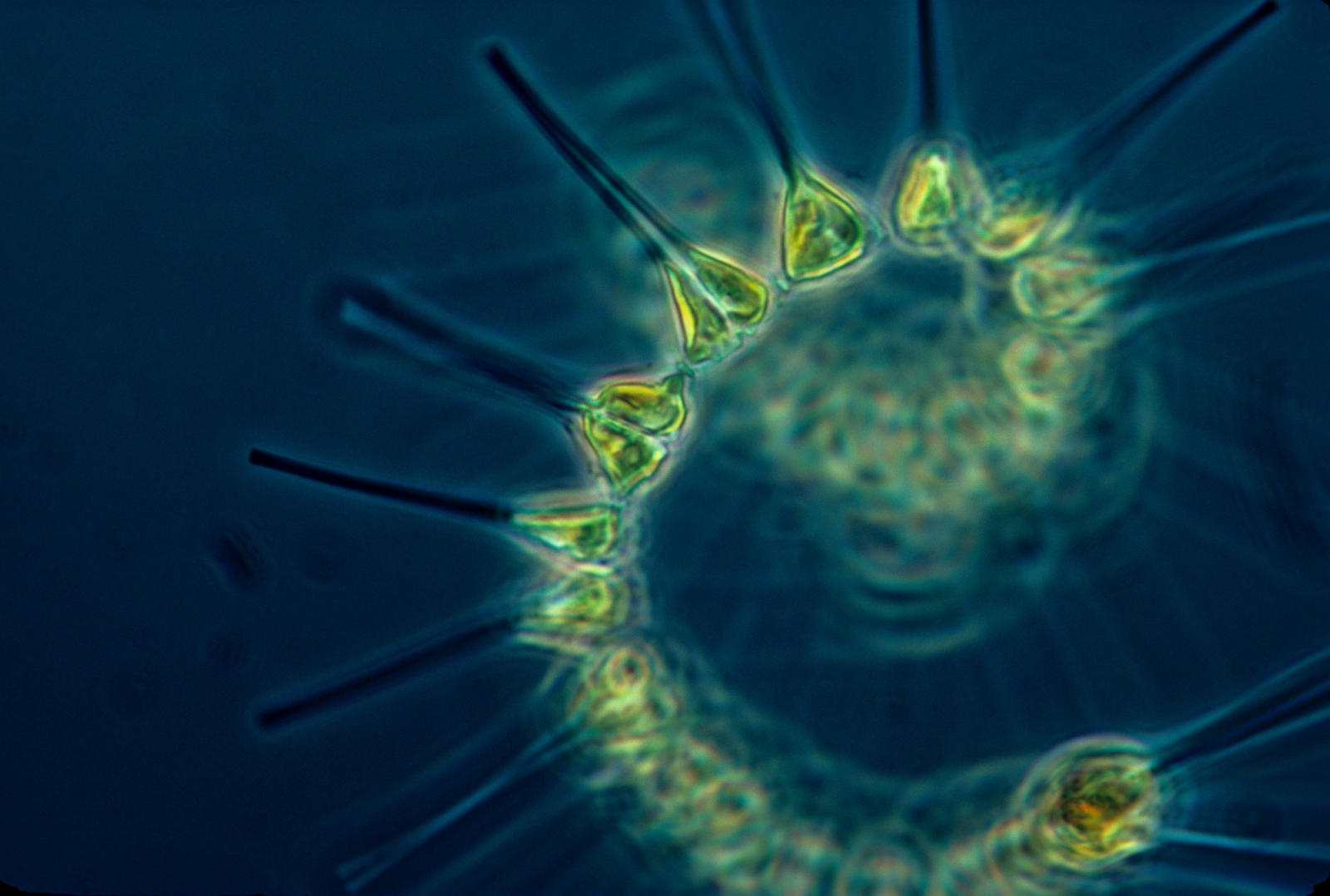Ocean Fronts - Planet Earth Online
Interview with
In winter, the sea might look dull, grey and lifeless, but the creatures that live there know that some areas have far more food than others. Fish are particularly fond of ocean fronts where masses of warm and cold water meet, as these tend to contain large quantities of plankton. Planet Earth's Richard Hollingham has been to see Plymouth Marine Laboratory's Peter Miller.
Peter - In the atmosphere, you get warm and cold air meeting. It's similar in the ocean. You get a big mass of cold water meeting warm water, and along that dividing line, you get mixing processes and that mixing can keep nutrients coming to the surface and that gives rise to plankton blooms, and it keeps the plankton growing for longer. Those are the areas where fish and larger animals have learned to find better foraging opportunities.
Richard - So, you're studying these ocean fronts. What are you looking at?
 Peter - We use satellites that are orbiting the earth everyday to map out the sea surface temperatures. And over the years, I've developed algorithms to automatically pick out and combine the locations of those fronts. So even though most of the ocean's covered by clouds, we can piece together a view of where these fronts are, simplify them so that you can see one line and then can relate those positions to where the animals are.
Peter - We use satellites that are orbiting the earth everyday to map out the sea surface temperatures. And over the years, I've developed algorithms to automatically pick out and combine the locations of those fronts. So even though most of the ocean's covered by clouds, we can piece together a view of where these fronts are, simplify them so that you can see one line and then can relate those positions to where the animals are.
Richard - What sort of animals are we talking about here? You mentioned fish.
Peter - Yeah, we've been studying animals from fish, basking sharks, dolphins, sea birds, all of the top marine predators like seals, turtles. It's surprising how many animals and how many scientists we found so interested in, relating where the animals are to these productive frontal zones.
Richard - And one of the scientists doing that work is PhD student at the Plymouth Marine Laboratory, Kylie Scales who is also with us on the rocks. What animals are you looking at?
Kylie - I have been using satellite animal tracking data to look at the movements of grey headed albatrosses in the southern ocean, the northern gannet in the Celtic Sea, and loggerhead turtles in the Mauritanian upwelling region - just some of the species that potentially might be targeting that foraging effort in frontal zones.
Richard - And some of the species, there are pretty exotic places around the world, but some of the species around the coast here include some of these big fish like basking sharks.
Kylie - Yes, so the basking shark is the second largest fish in the world. They range between an average of 2 to 5 metres and we frequently see them around the British coast, particularly around hot spots in the Isle of Man and around Cornwall. They forage primarily on zooplankton. So, these areas where you get enhanced zooplankton abundance like frontal zones could be really significant features in the foraging seascape of basking sharks.
Richard - And these are really curious-looking creatures because as you say, they are massive. Their head, its enormous and even though they're massive, they're just eating zooplankton.
Kylie - That's right. Their primary foraging strategy is really just to swim along near the surface where you get enhanced zooplankton abundances with their mouths wide open, and hoover up anything that might be in their path.
Richard - And a point to this Peter is to relate these ocean fronts to conservation.
Peter - Yes. What we've been able to do is, with evidence that we're building such as Kylie's PhD, about the importance of these frontal zones to different animals, we can then start to use fronts as a proxy for increased abundance or diversity of animals like dolphins and sharks, and seabirds. For the UK effort to set up new marine protected areas, we were able to feed our data on the distribution of fronts and that's been used quite widely in the project to setup the boundaries of these protected areas, to ensure that they conserve some of these pelagic animals.
Richard - So, understanding where these are, how they move, it's quite a big deal really.
Peter - It is and now that we've done the work for the UK, we're now collaborating with American scientists to look at the open ocean because there's a lot of concern about how difficult it is to conserve the marine life out in the wide ocean. And efforts are underway to start to piece together data that can allow the most important areas of the ocean to be protected.
- Previous Cellular Housekeeping could block HIV
- Next Saving Tasmanian Devils









Comments
Add a comment